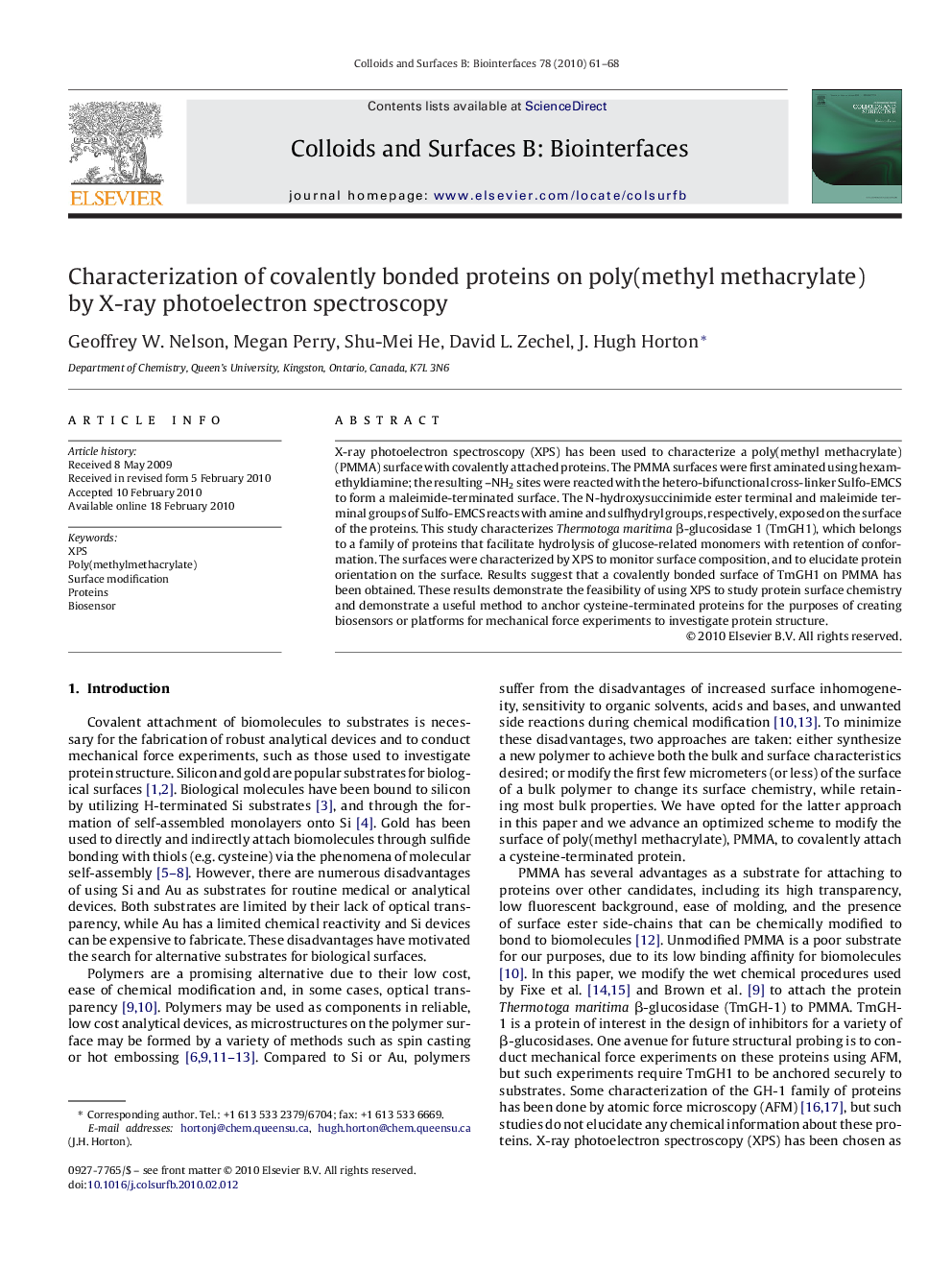| Article ID | Journal | Published Year | Pages | File Type |
|---|---|---|---|---|
| 601376 | Colloids and Surfaces B: Biointerfaces | 2010 | 8 Pages |
X-ray photoelectron spectroscopy (XPS) has been used to characterize a poly(methyl methacrylate) (PMMA) surface with covalently attached proteins. The PMMA surfaces were first aminated using hexamethyldiamine; the resulting –NH2 sites were reacted with the hetero-bifunctional cross-linker Sulfo-EMCS to form a maleimide-terminated surface. The N-hydroxysuccinimide ester terminal and maleimide terminal groups of Sulfo-EMCS reacts with amine and sulfhydryl groups, respectively, exposed on the surface of the proteins. This study characterizes Thermotoga maritima β-glucosidase 1 (TmGH1), which belongs to a family of proteins that facilitate hydrolysis of glucose-related monomers with retention of conformation. The surfaces were characterized by XPS to monitor surface composition, and to elucidate protein orientation on the surface. Results suggest that a covalently bonded surface of TmGH1 on PMMA has been obtained. These results demonstrate the feasibility of using XPS to study protein surface chemistry and demonstrate a useful method to anchor cysteine-terminated proteins for the purposes of creating biosensors or platforms for mechanical force experiments to investigate protein structure.
